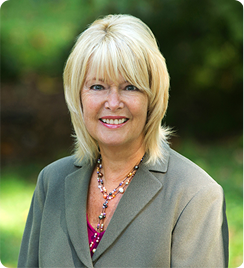
Callings are expressed at work, at leisure, or by contributing to your community. In addition to acting on a calling, you can “be” your calling. A great resource to learn more is Gregg Levoy’s book Callings, Finding and Following an Authentic Life. Levoy believes that “saying yes to the call puts you on a path that half of yourself doesn’t think makes a bit of sense, but the other half knows your life won’t make sense without”.
When you have completed Steps One and Two of Finding your True Calling (previous blogs), you will possess a preliminary vision and steps to take within ninety days to reach your goals. You are also in action. Fighting the inertia that keeps us stuck in the same old behaviors is challenging, but invigorating when you actually step out.
Think of the times you have procrastinated around acting on your dreams for days, months, even years. The contrast between the disappointment that comes with procrastination and the enthusiasm that comes with action is amazing. Which state would you prefer to live in? “Callings keep surfacing until we deal with them” according to Levoy. So when will you act?
If you haven’t taken your first step, here’s a tool to help. It’s called the “Single Daily Action”. Make a list of what you are procrastinating on and pick one task. For 20 minutes a day, work on it. Maybe you want to research training programs in your desired field, but you can’t get started. Take a timer, set it for 20 minutes and get to work. After 20 minutes, you can either stop or work longer. Do it every day, until your goal is completed
Action doesn’t have to be huge, difficult, or sensational. Action can be a first step, one that gets you in motion. Often once we get started in change, we’ll be eager and enthused at first. We wonder, why did I wait this long? This isn’t as difficult as I thought. I’m enjoying this.
But at some point, you usually hit a wall. We all do, even people we admire. Thomas Edison said, “I failed my way to success”. Accomplished people aren’t stopped by their “failures”. They learn and keep going.
We all need strategies to overcome our obstacles to progress. What are your obstacles? Common ones are fear, lack of information, low self-confidence, and lack of time. What is the largest barrier standing in the way of your progress right now?
Let’s say lack of sufficient time is a barrier. Frank is a very busy manager. He cares greatly about his staff and the work they produce in human resources. Even though Frank has advanced rapidly in his company, he feels something is missing. He is an accomplished musician and yet has not played his guitar in years. As a young man, Frank was in a band and loved singing and playing with his closest friends. These days it’s all Frank can do to keep up with work and family responsibilities. Frank dreams of playing in a band again. What can he do?
We all have the same 24 hours in a day. We cannot create more hours, but we can change how we use the hours we have. Here are some strategies:
Start small
Eliminate and learn to say no
Focus on the payoff
Make this urgent
Tell others your plan
Frank went to work at eliminating his obstacles. He decided to play his guitar for 30 minutes 3 times a week. He carved out this time by not watching CNN and sports TV. Frank found that the joy he re-discovered by being creative gave him increased energy and clarity at work. He was also having fun, so the payoffs motivated him to do more. While Frank had other activities that interested him, he made music the most urgent to pursue. Finally, Frank started telling friends and colleagues of his hobby and was encouraged and introduced to like-minded musicians. Who knows, a band may develop out of these associations. If Frank finds music is not as important and fulfilling as he imagines, he is willing to re-assess.
As you create you own obstacle strategy, you will be prepared when challenges occur to your forward motion. Remember these goals you have set reflect your plan for a satisfying life. They are calling you to listen and act.
Enjoy and see you on the path!







